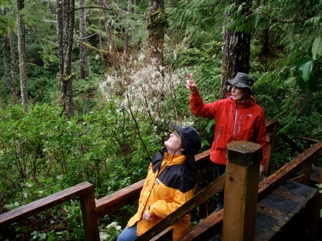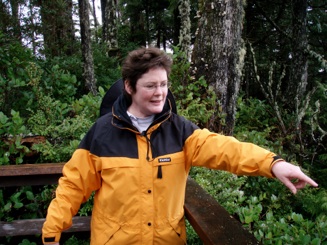As any particular sequence of behaviours between two animals that live together, that is have the opportunity for a repetition to happen many, many, times, likely several hundred times, that repetition takes on a regularity, and hence a “presence” of its own. page ![]()
In early animal behaviour studies people developed the notion of an “Intention Movement” as a coordinating device, ie. the first bit of a sequence elicited the response that was appropriate for the sequence. I think this is not dissimilar to what happens as the first step in a coordination of coordinations. For example pointing... it coordinates our attention as if we were about to be moving in that direction. If you watch a baby who is learning to “look at the bird” they are not responding to the notion of “a bird” but rather looking in the way you are looking, and the movement of the bird may catch their further attention. Dogs look right where the finger is, as if it were a nose pointing to something suitable. I taught Sindi to look along the line of sight by gradual increments of distance from caches of treats.
In all these cases, and many more that you may notice as you begin to look, a meaningful gesture has arisen from the beginning of an action. Now we use the gesture itself as a coordination of coordination. A recursion has been generated. Put differently: an element of a sequence becomes a token, or sign, of the sequence, as distinguished by an observer. It is always an observer already operating in language who sees this as a “token” or a “signal” -- for the beings involved, it just “works”.
YOUTUBE jiuvXYdoNKg Pille Bunnell, 8-3 cons coord and first recursion
YOUTUBE 7yt-88FyhAw Pille Bunnell, 8 3 blue sky
~
To the extent that language is a manner of living in coordinations of coordinations of consensual behaviors, nearness of co-existence in doing many things together is necessary for language to arise. At the same time, for nearness of co-existence to occur as a relational background in which languaging could arise spontaneously in the recursion of doing things together, it must be permanent, or recurrent and sufficiently prolonged. What can we say now about what may have been the biological fundaments for such nearness in the origin of our lineage as languaging primates?
Judging by the brain capacity of the skull of Australopithecus afarensis (about 450 cc), the brain of our ancestors 3 million years ago must have been larger than the brain of a domestic dog. Indeed, it must have been about the size of the brain of a chimpanzee. Dogs do not live in language among themselves or with us, but when we live with them in some stable nearness in intimacy and in the proper flow of recurrent interactions, we can live languaging circumstances with them, in which they participate in a more or less extended episodic manner. So the brain size of a dog allows it to enter with us in consensual coordinations of consensual coordinations of behaviors.
But for that to happen to a dog living with us, or for that to happen between any pair of animals, certain emotioning (or configuration of relational dynamics) is necessary. That is, the emotioning must be such that the frequent recurrent interactions that take place between those animals should conform a domain of coordinations of behavior in which recursive consensual coordinations of coordinations of behavior may arise. Furthermore, a special emotioning must also take place in the living together in coordinations of consensual behaviors so that the occasional episodes of languaging lived may become a manner of living that is conserved as a matter of course in the spontaneous learning of the offspring, with the result that a lineage defined by a coexistence in language begins. According to us, since love is the only emotional dynamics that gives rise to a living together in the close and sensual nearness in which a prolonged living together in recursive consensual coordinations of doings can take place for the pleasure of it, that emotioning must be love.
BUNNELL, Pille (ed.), 2008. Origin of Humanness in the Biology of Love. Imprint Academic. ISBN 978-1-84540-088-0, p. 61 page ![]()
~

